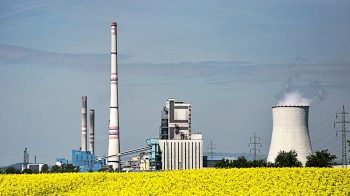The catalyst fertilizers market is estimated to account for USD 2.3 billion in 2018 and is projected to reach USD 2.5 billion by 2023, at a CAGR of 2.36% during the forecast period.
The market is primarily driven by growth in the production of fertilizers and expansion of production facilities in Asia. Also, with the increase in greenhouse gas emissions from ammonia plants, innovations in the catalyst industry to control emissions through selective catalytic reduction technology are projected to drive the growth of the market over the next five years.
On the basis of fertilizer production process, the Haber-Bosch segment is projected to witness the fastest growth during the forecast period.
Ammonia is one of the largest inorganic chemical produced across the globe through the Haber-Bosch process, developed first by BASF. The Haber-Bosch process is based on catalytic reactions, and hence, the conversion rate has been high for this process. According to the estimates by USGS, global production is expected to continue to grow 3%-5% annually due to the increasing fertilizer demand.
Apart from Haber-Bosch, owing to the increasing emissions of NOX and N2O into the environment from ammonia production, emission controlling catalysts have also been developed and are increasingly adopted in conjunction with synthesis catalysts. Thus, this process is projected to witness a comparatively fast growth during the forecast period.
On the basis of metal group, base metals are projected to witness the fastest growth in the market during the forecast period.
Catalysts are metal or organometallic compounds and are extensively used in refinery and fertilizer applications. Key players such as Clariant International (Switzerland), Johnson Matthey (UK), and Haldor Topsoe (Denmark) develop metal catalysts specifically for fertilizer production, wherein iron catalysts are the most preferred ones among ammonia fertilizer manufacturers. On the other hand, nickel and vanadium are widely used for sulfuric acid production in the Asia Pacific region.
Raw materials occupy over 70% of the production cost, and since ammonia and phosphate fertilizer production is major in Asian countries, considering the developing economic conditions of these countries, cheaper catalysts would be opted to stabilize the fertilizer cost. Hence, base metals are expected to maintain their dominance at a higher CAGR during the forecast period.
On the basis of fertilizer application, the nitrogenous fertilizers segment is projected to witness the faster growth in the catalyst fertilizers market
According to FAOSTAT, of the total nutrients consumed as fertilizers across the globe in 2016, over 70.7% were nitrogenous nutrients. In comparison to phosphatic fertilizers, ammonia and urea production has been growing at a higher rate in the Asian countries.
Also, with the increasing emissions from ammonia plants, emission control catalysts are being highly sought to meet the government standards in the market and hence, the nitrogenous fertilizers segment is projected to grow at a comparatively high CAGR during the forecast period.
Key Market Players:
Clariant International (Switzerland), DowDuPont (US), Project & Development India Ltd. (India), Johnson Matthey (UK), Haldor-Topsoe (Denmark), LKAB Minerals (Sweden), N.E.Chemcat (Japan), QuantumSphere Inc. (US), Quality Magnetite (US), and Oham Industries (India). Various strategies such as joint ventures, supply agreements, and new product launches were adopted by companies, to enter the catalyst fertilizers market.
